#Guangxu
Text

The following are the contents of the article, including a description of the infobox, listed in succession.
(title of infobox in Chinese and Manchu languages)
Chinese Imperial Air Force (English)
中華帝國空軍 (Hanzi)
Chung-hua Ti-kuo K'ung-chün (Wade-Giles, the most widely used Chinese romanization system in this timeline)
(Below is the name in Manchu script, it only renders sideways here)
ᡩᡠᠯᡳᠮᠪᠠᡳ ᡤᡠᡵᡠᠨ ᡳ ᠠᠪᡴᠠᡳ ᠴᠣᠣᡥᠠ (Manchu)
Dulimbai gurun-i Abkai Cooha (Manchu romanization)
Emblem of the Chinese Imperial Air Force:
Symbol consisting of the roundel with a blue-green-white-red dragon flying around the central red sun, vertical red and yellow banners with the name of the air force in white Hanzi and Manchu script, two outspread white bird wings, and the red imperial crown of the Great Qing Emperor
Founded: 10 August 1910; 113 years ago
(as Army Flying Corps)
25 December 1929; 93 years ago
(as current service)
Country: China
Type: Air force
Role:
Aerial warfare
Airborne forces
Air defense
Size: 300,000 active personnel (2023)
4,000+ aircraft (2023)
Part of: Chinese Imperial Military
Headquarters: Peking (this spelling remained popular in the English-speaking world)
Motto(s) 盡忠報國
English: "boundless loyalty to the country"
(the text of Yue Fei's famous tattoo)
Colors: Blue, yellow, red
(a medium cerulean blue, a slightly warm yellow, and a bright cherry red)
March:
Quick: Dragon Aviators' March
Slow: Five Thousand Years
Anniversaries: Air Force Day (14 August)
Aviation Day (10 August)
List of Engagements:
Late Kuang-hsü Crisis
(Second Canton Revolt)
(Wu-ch'ang Rebellion)
(Hatchet Gang Rebellion)
Sino-German War
First World War
Russian Civil War
(West Siberian Intervention)
Warlord Era
(Imperial Protection War)
(Yün-Kwei War)
(Southern Expedition)
(Sinkiang Campaign)
Outer Mongolia Insurgency
Second Sino-Japanese War
Second World War
Chinese Civil War
(Tai-wan Strait Crisis)
Korean War
(Yalu-Tumen Intervention)
Sino-Indian War
(Battle of Bhutan)
Tibet Uprising (1959)
(Operation Wind Shadow)
Third Indochina War
(Operation Phoenix Eye)
Spratly Islands Conflict
Indonesia-Malaya War
(Operation Celestial Spear)
Uzbekistan War
(Operation Black Tortoise)
Website: (Official website link)
Commanders:
Commander-in-Chief: Jui-wen Emperor (era name 睿文, means "Forward-thinking culture")
Director of the IDC: Li Kuo-t'ai
Minister of War: Marshal Fan Sung-yün
Chief of the Air Staff: Marshal Wei Chao-lin
Insignia:
Roundel: Concentric circles of blue, yellow, and red, with a thin ring of blue on the outside, a large area of yellow inside it, and a small red circle at the center
Fin flash: high visibility, Blue-Yellow-Red tricolor, low visibility yellow and red alone.
Ensign: Black Ensign with Qing imperial flag in the canton. In the black field are depictions in white of the Little Dipper and the North Star, arranged in an arc from the middle fly to the lower hoist. The black field represents the night sky and commemorates the air force's famous night raids during World War II.
Aircraft flown:
Bomber: Hsi-an JH-7, H-6
Electronic warfare: Russo-Balt RB-154,
Shan-hsi Y-8, Shan-hsi Y-9, J-16D
Fighter: Chʻêng-tu J-7, Mukden J-8, Chʻêng-tu J-10, Mukden J-11, Mukden J-16, Chʻêng-tu J-20, Samara Sa-27, Sa-30MKK, Sa-35S
Helicopter: Harbin Z-8, Harbin Z-9
Attack helicopter: Harbin Z-19, CAIC Z-10
Utility helicopter: Harbin Z-20
Interceptor: Mukden J-8
Trainer: K'un-lun L-15, K'un-lun JL-8, JL-9
Transport: Hsi-an Y-20, Shan-hsi Y-9, Shan-hsi Y-8, Hsi-an Y-7, Zhukovsky Zh-76
Tanker: H-6U, Zh-78
Chinese name in various transcriptions used in this world:
Traditional Chinese 中華帝國空軍 (used on the mainland)
Simplified Chinese 中华帝国空军 (used on Tai-wan)
Literal meaning: Chinese Imperial Air Force
Bopomofo: ㄓㄨㄥ ㄏㄨㄚˋ
ㄉㄧˇ ㄍㄨㄛˇ ㄎㄨㄥ ㄐㄩㄣ
Wade–Giles: Chung-hua Ti-kuo K'ung-chün
Cantonese Jyutping: Zung-waa dai-gwok Hong-gwan
(Below is the separate box for further reading on the Qing military that accompanies the main infobox in most such articles)
Armed Forces of the
Great Ch'ing Empire
Octagonal symbol known as "the Eight Corners" containing the colors of all the Eight Banners arranged to resemble the character 卐 (Wan, important to state-sponsored Vajrayana religion)
Executive departments:
Imperial Defence Council
Ministry of War
Staff:
Director of the IDC
General Staff of the Military
Works Department of the IDC
Censorate of the IDC
Services:
Chinese Imperial Military
Army
Navy
Air Force
Strategic Support
Independent troops:
Military Police Force
T'uan-lien Militia
Pao-chia Guards
Eight Banners
Special operations force:
Special Operations Department
Special Police Unit of the MPF
Snow Leopard Commando Unit
Mountain Eagle Commando Unit
Other troops:
CIM Joint Logistics Support Force
Military districts:
Eastern Theater Command
Southern Theater Command
Western Theater Command
Northern Theater Command
Central Theater Command
History of the Chinese military
Military history of China
Military ranks of China
Ranks of the Imperial Army
Ranks of the Imperial Navy
Ranks of the Imperial Air Force
(Main body of the article below here)
The Chinese Imperial Air Force (CIAF; Chinese: 中華帝國空軍; Wade–Giles: Chung-hua Ti-kuo K'ung-chün), also referred to as the Chinese Air Force (中華空軍) or the Imperial Air Force (帝國空軍), is the principal aerial service of the Great Ch'ing Empire, a part of the Chinese Imperial Military along with the Imperial Navy and the Imperial Army. The CIAF was officially established on 25 December 1929 and it is composed of five branches: aviation, ground-based air defense, radar, Airborne Corps and other support elements.
The development of the CIAF began with the creation of the Pei-yang Army Flying Corps in 1910, which flew French biplanes in reconaissance and bombing operations against rebels. With the splintering of the Pei-yang Army in 1916, elements of the Flying Corps entered the service of the various warlords vying for control of the government. During the First World War, ten bombers were shipped to Shang-hai for the Peking Government's use in dislodging the German Navy from Kiautschou Bay. The Flying Corps would participate in the Southern Expedition using primarily the Avro Avenger fighter aircraft and the Avro Aldershot heavy bomber provided by the United Kingdom, and in 1929, with the warlords brought together or defeated, the Air Staff was created as a separate branch of the military. The UK also assisted with the expansion of the Chinese aerospace industry during the Second Sino-Japanese War. Changes in the organization of the CIAF followed by modernization programs in the 1980s and increased technology development in the 21st century resulted in the J-20 stealth multirole fighter, the first of its kind for China.
The Air Force's mission is to secure the objectives of the Imperial Defence Council which are to "provide necessary security and defense of the Empire and to support the Government's international obligations". The highest-ranking military officer in the Air Force is the Chief of the Air Staff, who exercises supervision over Air Force units, while the IDC assigns Air Force components to unified combatant commands. Some units are also ceremonially affiliated with the Eight Banners, but since 1931 have been functionally integrated into the civilian command structure. The Helicopter Command contains most of the rotary-wing aircraft of the CIAF. Most of the air force is based in Mainland China, but some units do serve on foreign operations (principally over Manipur and Bukhara) or at long-established foreign bases (Havana, Ream, Djibouti, and Gorno-Badakhshan). Although the CIAF is the principal Chinese air power arm, the Imperial Navy's Fleet Air Corps and the Army Air Corps also operate armed aircraft.
Contents:
1 History
1.1 Origins
1.2 Warlord Era and Yüan Ch'en
1.3 First United Front
1.4 Second Sino-Japanese War
1.5 Chinese Civil War
1.6 Korean War to the Sino-Russian Split
1.7 1970s to 1980s
1.8 P'ing-hsiang era (平祥, Peaceful and Auspicious)
1.9 Jui-wen era
2 Personnel
2.1 Ranks and insignia
2.2 Commanders
3 Structure
3.1 Senior leadership
3.2 Headquarters
3.3 Commands
3.3.1 Transport command
3.3.2 Long-range command
3.3.3 Expeditionary command
3.3.4 Training and research
3.4 Order of battle
3.5 Airbases
3.6 Aerobatic display team
4 Aircraft
4.1 Combat air
4.2 Intelligence
4.3 Maritime patrol
4.4 Helicopters
4.5 Training aircraft
4.6 Advanced jet training
5 See also
6 References
6.1 Citations
6.2 Sources
7 Further reading
8 External links
History:
(Further information: link to page "Aviation in China")
Origins:
Today's Chinese Imperial Air Force (CIAF) traces its roots back to August 10, 1910 when the government authorized the creation of the Army Flying Corps in an effort to improve intelligence and gain the upper hand on insurrections. On the same day, construction began on Peking Nan-yüan Airport as part of a program to modernize national infrastructure. Initiated in the wake of the Boxer Protocol in 1901, the Keng-tzu New Policies were ordered by the Empress Dowager Tz'ŭ-hsi to reform government bureaucracy along with the military, and by the start of the Hsuan-t'ung reign a group of preparatory departments had been organized for experimentation with new technology and administrative systems. In 1903 an imperial edict expanded the Wu-wei Corps to 36 divisions, creating the Pei-yang Army, in 1905 the Imperial Examinations were abolished, and in 1907 a new law code and judicial system were rolled out. That same year, the tax code was reformed and the rail system was nationalized, which greatly helped the empire's finances but caused significant unrest as well.
With the death of Jung-lu in 1903, General of the Right Division Yüan Shih-k'ai became commander of the Pei-yang Army. His role in the 1898 coup d'état against the Kuang-hsü Emperor made him many enemies, and when the empress dowager and the emperor died within a day of each other in 1909, he was forced to resign by Prince Ch'ün and return to his home village ostensibly for health reasons. In spite of this, Yüan remained in communication with his associates in the army. In the wake of the February 1910 Keng-hsü Army Uprising, he authorized the Pei-yang Army to found a flight school at Nan-yüan to train a group of eight pilots to fly reconnaisance using Cauldron Type D biplanes purchased from France, improving the army's ability to respond. In early 1911, the Aviation Research Institute was founded.[6]
Warlord Era and Yüan Ch'en:
(Photo labeled "Nan-yüan Air Force Academy drillmasters in front of Avro aircraft")
(Photo labeled "Voisin V in Shang-hai")
In 1911, a major popular uprising began in Canton while another army mutiny occurred at Wu-ch'ang. In a panic, Empress Dowager Lung-yü convinced Yüan to come out of retirement and lead the war effort in exchange for the position of Prime Minister and the final adoption of the Hsuan-t'ung Constitution. The rebellion was crushed by the end of 1912, and the T'ung-meng-hui (TMH) revolutionary society was forced to flee to Japan once again with numerous dead. With the south pacified, Yüan feared he would no longer be of use to the Ch'ing court. In spite of the bureaucrats' protests, he brought his army into the capital in order to protect himself and his allies from execution, essentially holding the court hostage. For five years, he and his majority Han chinese cabinet ruled the country.
Reasoning that China desired a new Han-ruled dynasty, Yüan revised the constitution to make himself a dictator before announcing plans to seize the throne as the Hung-hsien Emperor of Great Ch'en, allowing his army to plunder Manchu estates as northern Chinese cities descended into racial violence. The Ch'ing court fled to Gan-su, where support for Han rule was lower, under the protection of Ma An-liang and Shaan-hsi governor Ch'ien Neng-hsün. With the divided country now in civil war, many of Yüan's closest supporters abandoned him, and the solidarity of his Beiyang clique of military protégés dissolved. The Hung-hsien Emperor was opposed by not only the Ch'ing and the minorities, but far more importantly by his subordinate military commanders, who believed that his usurpation would allow him to rule without depending on the support of the military.
A coalition of governors and officers led by An-hui governor Liang Tun-yen launched the Imperial Protection War against him, officially in the name of the Hsuan-t'ung Emperor, while the Air Corps rebelled as well and dropped bombs on the Forbidden City. Yüan's health continued to decline, and his death in 1916 paved the way for the return of K'ang Yu-wei and other anti-Yüan reformist exiles. The Prince Ch'ing Cabinet retook control of the capital, denouncing Yüan and purging his allies, while government authority was greatly damaged. Provinces broke away and the TMH returned in 1917 to start a Han-nationalist insurgency in Hunan.
The fall of Yüan Shih-k'ai created a power vacuum and fractured the army. Fearing for their lives, many of the southern Pei-yang generals revolted and took control of the provinces as military governors. Minister of War Wang Shih-chen, nominally in charge of the Pei-yang Army, abolished it and reorganized the loyalist forces into the Chinese Imperial Military. Expanding the airbases at Nan-yüan and Ta hsiao-ch'ang, Marshal Wang was able to acquire more machines from Britain and France when the new army attacked the German Leased Territory of Kiautschou Bay in 1917 and China was drawn into the First World War.
As part of the allied Operation Asher, ten Voisin V pusher bombers were produced in France and shipped to Shang-hai. In spite of having defeated the 1914 allied attack, by this time the garrison was low on supplies and the Chinese aircraft proved devastating to German morale during the Second Siege of Tsing-tao. An avid aviation enthusiast, the Hsuan-tung Emperor himself also took great interest in the development of the Air Corps, and when he assumed direct rule in 1924 he personally invested large amounts of his constitutional subsidy into it.
First United Front:
During the late 1920s, the Ch'ing Imperial Government formed the first united front with the liberal T'ung-meng Hui (TMH) party against competing warlords in a bid to reunite a fractionalized China, combining the liberal Wu-han Government with the Imperial Assembly. In this period, various airplanes were purchased and deployed by warlords in their struggle for power until nominal Chinese reunification in 1929 following the Southern Expedition which saw the use of Avro Aldershot heavy bombers to inflict serious damage on the infrastructure of several provinces in support of the government offensives. That year, the CIAF was designated as an independent branch of the armed forces. The eighteen graduate pilots of the military flight school included nine republican and nine monarchist pilots who were sent to the Russian Federation for two years of advanced flight training under the tutelage of the more experienced Russian Air Force. Two of the imperial graduates, Kuo Tzu-han and Sung Chien-yü, continued to serve in the Russian Air Force for five years until, in September 1928, they returned to Ti-hua as instructors.
At the same time, Tsai-chen the fifth Prince Ch'ing established the Bureau of Aeronautics in 1920. Subsequently, the organization continued to develop, and successively established an aircraft factory, an aviation command, and a new aviation school in Hsi-an. In May 1927, the Aviation Department of the Ministry of War was changed to the Aviation Committee of the Defense Council of the Imperial Government. By 1929, the government's aviation force was officially independent from the Army General Command and became an independent service.
Second Sino-Japanese War:
(Photo labelled "Self-developed Chinese transport aircraft during the Battle of Ch'ang-sha")
Following the abolition of many of their social privileges in the Hsin-wei Reform Act, many Banner families experienced poverty and violence. In response to perceived neglect, they became disaffected with the Hsuan-t'ung Emperor. Some sided with the northeastern Pei-yang Army generals of the Fêng-tʻien Clique, while some sought support from Imperial Japan.
A minor dispute known as the Wan-pao-shan incident between Han and Korean farmers occurred on July 1, 1931. The issue was highly sensationalized in the Imperial Japanese and Korean press, and used for considerable propaganda effect to increase anti-Chinese sentiment in the Empire of Japan. Believing that a conflict in Manchuria would be in the best interests of Japan, Kwantung Army Colonel Seishirō Itagaki devised a plan to provoke Japan into invading Manchuria by setting up a false flag incident for the pretext of invasion. The Independent Garrison Unit of the 29th Infantry Regiment (which guarded the South Manchuria Railway) placed explosives near the tracks, but far enough away to do no real damage.
On the morning of September 19, two artillery pieces installed at the Mukden officers' club opened fire on the Chinese garrison nearby, in response to the alleged Chinese attack on the railway. Chang Hsueh-liang's small air force was destroyed, and his soldiers fled their destroyed Pei-ta-ying barracks, as five hundred Japanese troops attacked the Chinese garrison of around seven thousand. The Chinese troops were no match for the experienced Japanese troops. By the evening, the fighting was over, and the Japanese had occupied Mukden at the cost of five hundred Chinese lives and only two Japanese lives, thus starting the greater invasion of Manchuria. By 1932, most of the region was under Japanese control and the Empire of Manchukuo was created, while a young member of the Hitara clan was enthroned in Ch'ang-ch'un as the K'ang-te Emperor.
The CIAF immediately dispatched combat aircraft to the Hung-ch'iao Aerodrome during the January 28th Incident of 1932, and aerial skirmishes occurred for the first time between China and the Imperial Japanese. In February 1932, US Reserve Lt. Robert McCawley Short, who was transporting armed Chinese aircraft, shot down an IJN aircraft on February 19, 1932, and downed another on February 22 before he was killed (he was posthumously raised to the rank of colonel in the CIAF). During the early days of China's war of resistance against the Japanese invasion, the Imperial Air Force participated in several battles, including attacking Imperial Japanese Navy warships along the Yangtze River and supporting the Battle of Shang-hai. By this time, the Imperial Air Force's main fighter models were the Curtiss Hawk II and Hawk III fighters. On August 14, 1937, Japanese Imperial Navy bombers bombed Hang-chou Chien-ch'iao Airport, but was defeated by the CIAF; therefore, August 14 was designated as Air Force Day by the Imperial Government. In May 1938, the CIAF dispatched two B-10 bombers to Japan to drop leaflets.
By the middle of the war, intelligence units of the Imperial Japanese Navy cracked the radio codes of the Chinese army, putting the Air Force under attack. In the middle and late stages of the Second Sino-Japanese War, the addition of Chennault and other foreign pilots, as well as the support provided by the United States after joining the Allies, restructured the combat power of the CIAF and participated in the Hsin-chu Air Attack, and air raids on Japan. After the end of World War II, in June 1946, the Aviation Committee of the Military Committee of the Imperial Government was changed to the General Command of the Air Force.
Chinese Civil War:
In January 1941, as intensifying clashes between imperial and TMH forces ended the second united front against invading Japanese forces, the government's Imperial Defense Council (IDC) established the Air Force Engineering School with Kuo as commandant and Sung as head instructor. In May 1944, just over a year before the Japanese surrender to Allied forces, the IDC established an Aviation Section in Hsi-an with Kuo as its director and Sung as deputy director. Two years later in May 1946 and after the withdrawal of Japanese troops, the IDC established the Northeast Old Aviation School in Kirin. By 1949 the Aviation Section of the IDC had 560 trained personnel (125 pilots and 435 ground support specialists), purchased 435 aircraft from the Russian Federation, acquired 115 republican aircraft, and operated seven military flight schools.
During the Second Civil War between the T'ung-meng Hui and the Imperial Government from 1946 to 1949, the Air Corps of the Republic of China participated in combat support and air strikes against the CIAF on the mainland and around the Tai-wan Strait. In October of the same year, the ACROC assisted in stopping the advance of the Chinese Imperial Army at the Battle of Ku-ning-t'ou in Quemoy, and in April 1949, the Air Corps retreated to the former Japanese colony of Tai-wan along with other government departments of the ROC. In October 1952, Marshal Chou Ên-lai and the battle-hardened army of the Chinese Communist Party broke with the T'ung-meng Hui and launched a successful revolution with the help of Indigenous Taiwanese, abolishing the National Assembly of the TMH and founding the People's Republic of China; the world's second socialist state after India. The ACROC sided with the revolution and became the PRCAAF. As relations soured between the left liberal governments of NATO and the right authoritarian governments of the Eurasian Pact, the United States intervened on behalf of the PRC and preserved the island's self-government. There have been at least 11 air battles in the area since 1952.
The real opportunity to obtain a large number of aircraft came from the Northeast Alliance Aviation School established in 1946 after the end of the Anti-Japanese War. At this time, the Imperial Government seized Japanese-made aircraft, trained pilots, and received a large number of American-made aircraft from the surrendered ROC Air Force in southeast China and Nanking during the civil war. On March 17, 1949, personnel were transferred from the Northeast Aviation School to establish the "Imperial Defence Council Aviation Bureau" in Peking. The director Ch'ang Ch'ien-k'un (the executive vice president of the Northeast Aviation School), under the Combat Education Department, Aeronautical Engineering Department, Civil Aviation Department, Information Section and Supply Section, staffed 64 people. In May 1949, the Navigation Management Office, the Secretariat, and the Imperial Office were added, and the number was expanded to 172 people. The major military regions have since successively established aviation divisions.
(end of finished part of article)
#China#alternate history#Qing#Cixi#Guangxu#Sun Yat Sen#Wade Giles#Manchu#Xuantong#East Asia#russian civil war#bolshevism#Zhou Enlai#Yuan Shikai#Xinhai#Taiwan#history#aviation
0 notes
Text

Hey Guangxu why are you calling the Empress Dowager "Daddy"?
#towards the republic#chinese history#Guangxu Emperor#Empress Dowager Cixi#im sure that's the correct protocol its just a bit odd
6 notes
·
View notes
Text

Chinese Hair Ornament From The 1875-1908 AD Guangxu Dynasty
Photo: Aukland Museum/CC BY 4.0)
Source: ancient-origins.net
25 notes
·
View notes
Photo
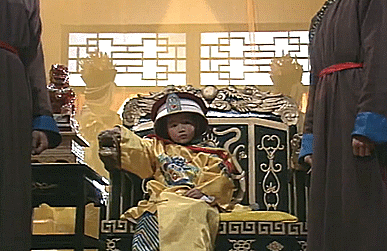
50 Years, 50 Gifs
The Rise and Fall of the Qing Dynasty: Bloodshed Over the Forbidden City | 滿清十三皇朝 之 血染紫禁城 [ATV, 1990]
19/50
#michelle yim#米雪#empress dowager cixi#慈禧太后#Bloodshed Over the Forbidden City#hkdrama#hkdramagif#sylvia lai#森森#empress dowager ci'an#慈安太后#guangxu emperor#光绪帝#滿清十三皇朝 之 血染紫禁城#血染紫禁城#I like that they show Ci'an being wary of her vs how they appeared equal at Tongzhi's accession
12 notes
·
View notes
Photo

The Grand Imperial Wedding of the Guangxu Emperor, Qing Kuan and Court Painters, 1889
#the grand imperial wedding of the guangxu emperor#Qing kuan#court painters#painting#art#1889#1880s#1800s#19th century#wedding
9 notes
·
View notes
Text
¿Historias cortas para no dormir y así no tener pesadillas?
1900 Ciudad Imperial de Pekín
Daqingmen da la bienvenida a Luan, debería ser el escenario cuando Cixi y Guangxu ingresaron a Daqingmen en 1901 cuando regresaron a Luan desde Xi'an, y la Plaza de Tiananmen está en la distancia.
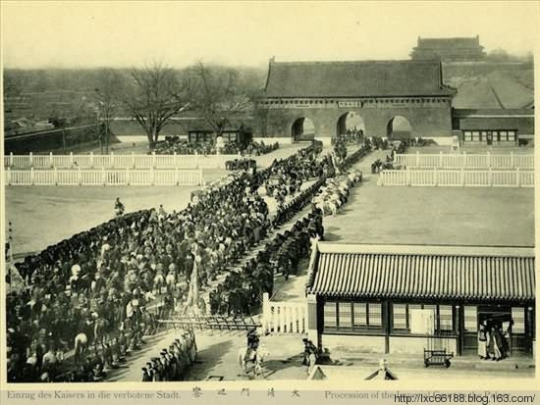
¿Guerras del Opio impuestas por las Grandes Potencia Democráticas Occidentales Imperialistas...?
#Daqingmen da la bienvenida a Luan debería ser el escenario cuando Cixi y Guangxu ingresaron a Daqingmen en 1901 cuando#¿Historias cortas para no dormir?
0 notes
Link
#chinese antiques#antique porcelain#antique shop online#fine classic antiques#qing dynasty#guangxu period
0 notes
Text
Note about periodization
I am going to start describing time periods in Chinese history with European historical terms like medieval, Renaissance, early modern, Georgian and Victorian and so on, alongside the standard dynastic terms like Song, Ming and Qing I usually use. So like something about the Ming Dynasty I will tag Ming Dynasty and Renaissance. I already do it sometimes but not consistently. Here’s why.
A common criticism levied against this practice is that periodization is geographically specific and that it’s wrong and eurocentric to refer to, say, late Ming China as Renaissance China. It is a valid criticism, but in my experience the result of not using European periodization is that people default to ‘ancient’ when describing any period in Chinese history before the 20th century, which does conjure up specific images of European antiquity that do not align temporally with the Chinese period in question. I have talked about my issue with ‘ancient China’ before but I want to elaborate. People already consciously or subconsciously consider European periodizations of history to be universal, because of the legacy of colonialism and how eurocentric modern human culture generally is. By not using European historical terms for non-European places, people will simply think those places exist outside of history altogether, or at least exist within an early, primitive stage of European history. It’s a recipe for the denial of coevalness. I think there is a certain dangerous naivete among scholars who believe that if they refrain from using European periodization for non-European places, people will switch to the periodization appropriate for those places in question and challenge eurocentric history writing; in practice I’ve never seen it happen. The general public is not literate enough about history to do these conversions in situ. I have accumulated a fairly large pool of examples just from the number of people spamming ‘ancient China’ in my askbox despite repeatedly specifying the time periods I’m interested in (not antiquity!). If I say ‘Ming China’ instead of ‘Renaissance China’ people will take it as something on the same temporal plane as classical Greece instead of Tudor England. How many people would be surprised if I say that Emperor Qianlong of the Qing was a contemporary of George Washington and Frederick the Great? I’ve seen people talk about him as if he was some tribal leader in the time of Tacitus. European periodization is something I want to embrace ‘under erasure’ so to say, using something strategically for certain advantages while acknowledging its problems. Now there is a history of how the idea of ‘ancient China’ became so entrenched in popular media and I think it goes a bit deeper than just Orientalism, but that’s topic for another post. Right now I’m only concerned with my decision to add European periodization terms.
In order to compensate for the use of eurocentric periodization, I have carried out some experiments in the reverse direction in my daily life, by using Chinese reign years to describe European history. The responses are entertaining. I live in a Georgian tenement in the UK but I like to confuse friends and family by calling it a ‘Jiaqing era flat’. A friend of mine (Chinese) lives in an 1880s flat and she burst out in laughter when I called it ‘Guangxu era’, claiming that it sounded like something from court. But why is it funny? The temporal description is correct, the 1880s were indeed in the Guangxu era. And ‘Guangxu’ shouldn’t invoke royal imagery anymore than ‘Victorian’ (though said friend does indulge in more Qing court dramas than is probably healthy). It is because Chinese (and I’m sure many other non-white peoples) have been trained to believe that our histories are particular and distant, confined to a geographical location, and that they somehow cannot be mapped onto European history, which unfolded parallel to the history of the rest of the world, until we had been colonized. We have been taught that European history is history, but our history is ethnography.
It should also be noted that periodization for European history is not something essentialist and intrinsic either, period terms are created by historians and arbitrarily imposed onto the past to begin with. I was reading a book about medievalism studies and it talked about how the entire concept of the Middle Ages was manufactured in the Renaissance to create a temporal other for Europeans at the time to project undesired traits onto, to distance themselves from a supposedly ‘dark’ past. People living in the European Middle Ages likely did not think of themselves as living in a ‘middle’ age between something and something, so there is absolutely no natural basis for calling the period roughly between the 6th and 16th centuries ‘medieval’. Despite questionable origins, periodization of European history has become more or less standard in history writing throughout the 19th and 20th centuries, whereas around the same time colonial anthropological narratives framed non-European and non-white societies, including China, as existing outside of history altogether. Periodization of European history was geographically specific partially because it was conceived with Europe in mind and Europe only, since any other place may as well be in some primordial time.
Perhaps in the future there will develop global periodizations that consider how interconnected human history is. There probably are already attempts but they’re just not prominent enough to reach me yet. Until that point, I feel absolutely no moral baggage in describing, say, the Song Dynasty as ‘medieval’ because people in 12th century Europe did not think of themselves as ‘medieval’ either. I am the historian, I do whatever I want, basically.
#I was watching an unrelated video about dnd worldbuilding#and out of nowhere someone in the comment section called 1300s chinese people 'ancient asians'#*facepalm*#so I was reminded of this again#rant#colonialism#orientalism#chinese history#historiography
927 notes
·
View notes
Text
The Illustrious Client
First published in the US in 1924 and the UK in 1925, the latter as a two-parter, this forms part of Case-book.
The first part in The Strand ends with Watson seeing the newspaper headline about the attack on Holmes.
Northumberland Avenue is a street running from Trafalgar Square to the Thames Embankment. It includes a pub called The Sherlock Holmes.
The Carlton Club was founded by the Conservative Party and was long its defacto headquarters. Originally on Carlton Terrace, it moved to Pall Mall in 1835, with the building rebuilt in 1856. A direct hit by a German bomb in 1940 destroyed the building and the Club moved to 69 St James's Street, former home of Arthur's Club. Women were not allowed to be associate members until the 1970s and not full members until 2008, with Margaret Thatcher getting honorary membership when she become Tory leader in 1975. She later become club president in 2009, although by his point she had dementia and died in 2013.
The general consensus is that the "Illustrious Client" is no less than Edward VII himself, who Holmes may have previously gotten the Beryl Coronet back for.
Prague was then under Austrian rule.
The Splügen Pass, used for travel since Roman times, connects Switzerland and Italy and with its great height, hairpins and spectacular views, is considered one of the greatest driving challenges on the planet, having featured in Top Gear. The San Bernandino tunnel has taken most of the non-tourist traffic and it is now closed in winter for safety reasons.
Kingston upon Thames, known as Kingston for short, is a town located 10 miles SW of Charing Cross. Until 1965, it was in Surrey before becoming part of Greater London and part of the Royal Borough of Kingston upon Thames. Surrey County Council were based there until 2021, when their offices moved to Reigate.
The Hurlingham Club in Fulham is where horse polo's rules were established - it even hosted Olympic polo in the 1908 London Games, but the fields were compulsorily purchased by the local council after the Second World War for housing. It was also home to pigeon shooting and was home of world croquet, still holding major events in the latter. Edward VII was a keen patron of the site.
Charlie Peace was an English burglar and double murderer, executed in 1879. He ended up featuring in Madame Tussaud's Chamber of Horrors, which was oddly enough replaced between 2016 and 2022 with an immersive Sherlock Holmes Experience... which at £66.50 a ticket was a bit too expensive.
HMP Parkhurst, a Category B prison located on the Isle of Wight, merged in 2009 with HMP Albany to form HMP Isle of Wight, although each part retains its own name. Notable inmates include the Kray Twins, Peter Sutcliffe, Ian Brady and currently Serbian war criminal Radovan Karadžić.
Hypnotism was rather in vogue by this time.
Apaches were the name given to various criminal gangs in Paris; named after the Native American tribe. There are various suggestions as to how that came about.
Montmartre, in the 18th arrondissement of Paris, was widely known for its artistic community during this time, with many a famous name living there due to the low rents. It's still there and development is restricted due to the historic character. Pigalle, Paris's red-light district, is next door.
Kitty Winter would feature as a character in Elementary, played by Ophelia Lovibond. Gruner turns up as well.
"Tinker’s curse" is Kitty saying, in the language of the time, that she does not give an [expletive deleted].
Ruritania is a fictional country first featured in the 1894 Anthony Hope novel The Prisoner of Zenda. It has become a byword for quaint small European countries in Central and Eastern Europe.
China was still an Empire in 1902, nominally ruled by the Guangxu Emperor, aka Zaitan, but an 1898 coup resulted in his loss of any real power; he was even in house arrest for a while. He died in 1908, probably poisoned by arsenic. His nephew, Puyi, would be the last Chinese Emperor and is beyond the scope of this article.
I cannot discuss Chinese pottery in any depth and so will not attempt to.
Some husbands might have questioned the gallantry of King Edward VII, who had a box for his mistresses at his coronation.
Armorial bearings are the "shield" part of a coat of arms. The British royal one traditionally depicted a bare-breasted woman as part of the harp on the bottom left, but this is no longer standard practice.
Edward VII, while having no actual political power, was able to exercise quite a bit of influence behind the scenes, especially in foreign and defence policy.
All criminal prosecutions are brought in the name of the monarch, rendered "R" (Rex or Regina) in text and "the Crown" when spoken). i.e. R vs. Winter. In addition, judicial reviews (i.e. is this government decision legal) are also brought in the name of the monarch, with the name of the actual plaintiff in brackets since a 2001 change to the format, e.g. R (Smith) vs. Secretary of State for the Home Department. It is common for initials to be used in those brackets to protect the identity of a plaintiff, such as the recent decision on flying migrants to Rwanda.
#letters from watson#sherlock holmes#the illustrious client#illu#acd canon#factoids#history#Edward VII
25 notes
·
View notes
Photo

Superb Chinese Gilt Gold Famille Rose + Blue And White Porcelain Plate w Guangxu Mark https://www.etsy.com/listing/1345696943/a6797-superb-chinese-gilt-gold-famille?click_key=59134caf9b3c74f8ef337849428d354c1d919c65%3A1345696943&click_sum=564c2452&ref=shop_home_active_2&frs=1
82 notes
·
View notes
Text

Hey Guangxu why are you calling the Empress Dowager "Daddy"?
#towards the republic#chinese history#Guangxu Emperor#Empress Dowager Cixi#im sure that's the correct protocol its just a bit odd
0 notes
Note
You wouldnt happen to see have that analysis for Blue Erlang Shen would you? What you said about his Shu lineage sounded so cool if you don't mind sharing!
Here you go! The post just goes into what it means thematically for Erlang Shen to be depicted as human versus monstrous though wrt blue-green skin, and doesn't go much more into his Shu lineage. Basically all my thoughts about that are in the actual art post, but here's some more info!
I just think it'd make sense if the blue interpretations of Erlang Shen stemmed from Shu artifacts seeing as he's a Sichuanese god and is still widely recognized as a Lord of Sichuan.



[ID: Several variations of the 蜀 Shu character from varying dynasties. End ID]
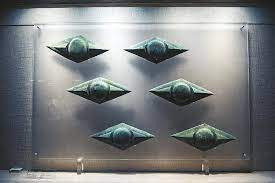
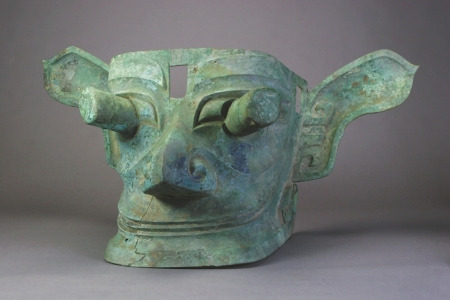
[ID: Photos of Sanxingdui artifacts. One being a set of eye-shaped ornaments. The other being a head or mask with large rods protruding from the eyes and an intentional hole in its forehead. End ID]
People have noted that the motif of eyes reoccurs frequently in Shu artifacts, some coining it "眼睛崇拜". I haven't seen much consensus or discussion on why interpreting Erlang Shen's Heavenly Eye 天眼 as a vertical third eye is so popular, so this is just my own personal theory.
The first king of Shu country, Can Cong (also known as 青衣神 Blue-Green Robed God) was also noted to have vertical eyes 目纵 in texts such as 华阳国志·蜀志 "Records of HuaYang Country- Shu Annals." So. That's something I'm also pointing to. Both the vertical eyes and the blue-green theme.
TAKE THIS BIT WITH GRAIN OF SALT (can't find original source text for it, only references to it, but i still think it's interesting enough to mention):
I've also heard that the archaeologist Wei Juxian 卫聚贤 has records around the 30th Year of Guangxu 光绪三十 of a Shu tradition called “Opening the Heavenly Eye 开天眼" wherein people carved a vertical socket into their forehead and placed a black bead in it to serve as a Heavenly Eye 天眼。 BUT I CAN'T FIND THIS SOURCE TEXT. SO AGAIN TAKE THIS WITH A GRAIN WITH SALT (<- guy covering all his bases bc once I answered an anon's JTTW question and someone quoted it on Iron Fan Princess's wikipedia, please don't do that, im doing very shallow casual research rn just for fun and should not be considered a scholarly source)
#asks#anonymous#journey to the west#jttw#xiyouji#chinese mythology#erlang shen#yang jian#definitely something i wanna research more once my chinese is at the level where i can read scholarly articles
48 notes
·
View notes
Photo

50 Years, 50 Gifs
The Confidant | 大太監 [TVB, 2012]
41/50
#michelle yim#米雪#empress dowager cixi#hkdrama#hkdramagif#the confidant#大太監#wayne lai#黎耀祥#li lianying#never have I watched a show of hers with this much wasted potential#even if they didn't want to do the guangxu era (they should have...) this stupid show was derailed so hard in the second half#it felt like they stopped knowing what do with Cixi (your first female lead!)
10 notes
·
View notes
Photo

Empress Dowager Cixi (29 November 1835 – 15 November 1908), of the Manchu Yehe Nara clan, was a Chinese noblewoman, concubine and later regent who effectively controlled the Chinese government in the late Qing dynasty for 47 years, from 1861 until her death in 1908. Selected as a concubine of the Xianfeng Emperor in her adolescence, she gave birth to a son, Zaichun, in 1856. After the Xianfeng Emperor's death in 1861, the young boy became the Tongzhi Emperor, and she assumed the role of co-empress dowager, alongside the Emperor's widow, Empress Dowager Ci'an. Cixi ousted a group of regents appointed by the late emperor and assumed the regency along with Ci'an, who later died. Cixi then consolidated control over the dynasty when she installed her nephew as the Guangxu Emperor at the death of her son, the Tongzhi Emperor, in 1875. This was contrary to the traditional rules of succession of the Qing dynasty that had ruled China since 1644.
13 notes
·
View notes
Text

Rating: Explicit
Warnings: No Archive Warnings Apply
Category: M/M
Fandom: 桃花债 - 大风刮过 | Peach Blossom Debt - Dà Fēng Guā Guò
Relationships: Song Yao | Guangxu Yuanjun/Hengwen Qingjun
Tags: Post-Canon, Plot What Plot/Porn Without Plot, Bondage, Body Worship, Boys in love, Boys kissing, POV First Person, Song Yao POV, Gags, Blow Jobs, Established Relationship, Angst With a Happy Ending, Anxiety, Service Top Song Yao, Bottom Hengwen Qingjun, Fluff and Angst
Summary: Now that Song Yao and Hengwen Qingjun are living together in peace on their island, Hengwen wants to try some things in the bedroom, and Song Yao is worried, but always happy to oblige.
Worship, Chapter 1: For Me
4 notes
·
View notes
Text
THE TALE OF FOOD
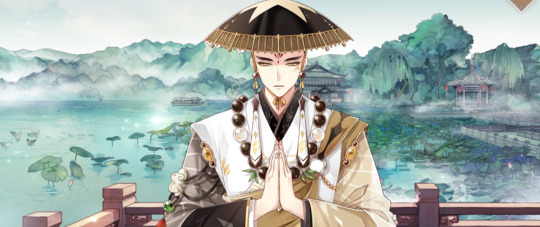
DINGHU'S VEGGIE STORY #1
━
On this fine day, the warm rays of the Sun illuminate Kongsang, bringing with it comfort and peace. Even the loud shouts from Suckling Pig Roast are nothing but golden rays that add to the eaves.
SUCKLING PIG ROAST : The incident last time was an accident! I swear in the name of the flame in my palm that I will never burn another piece of equipment into ashes!
BUDDHA'S TEMPTATION : Suckling Pig Roast, why are you quarreling with our gorgeous so early in the morning?
SUCKLING PIG ROAST : Oh, Kongsang Ambassador, you came just in time! I was just about to fix the roof of Glazed Tile House, but Master won't give me the farm tools no matter what I say!
SUCKLING PIG ROAST : I know that you also hide an unknown source of power within your body. Use it to seduce Master!
OPTION 1 : WHY DO YOU NEED TO FIX THE ROOF?
SUCKLING PIG ROAST : Wh-When I was gliding across the roofs the other, I accidentally did some damage...
OPTION 2 : WHY DO YOU NEED TO SEDUCE ME?
BUDDHA'S TEMPTATION : Although seducing beauties isn't something a Kongsang Ambassador is expected to do, I still would've done so without Suckling Pig Roast's request. After all, I'm willing to do anything to earn your smile, Gorgeous.
BUDDHA'S TEMPTATION : Also, is the house you mentioned a small residence built with blue bricks and glazed tiles? I heard that the residence has a lotus pond. If you throw a silver coin into the pond and make a wish, your wish may come true.
BUDDHA'S TEMPTATION : The other day, Ron Goldie ordered two carriages worth of silver coins... I'd better visit the owner of the residence to make sure we didn't cause him any trouble.
SUCKLING PIG ROAST : Wishes coming true?! T-Then the owner of the residence must be an expert in magic and wonders. Maybe they're just like me! Master, let's go!
BUDDHA'S TEMPTATION : Wait! Suckling Pig Roast... Running with our gorgeous and a shovel slumped over your shoulder is highly inappropriate!
━

Inside the garden of the petite residence, a monk donning a beige robe is meditating.
The banks of the pond are littered with footprints. Tiles are scattered everywhere, covered in loose strands of dead grass. The bottom of the lotus pond is reflecting rays of silvery light. Countless silver coins lie silently on the bottom of the pond.
SUCKLING PIG ROAST : Ah! It's you? You're the owner of this Glazed Tile House?
DINGHU'S VEGGIE : Amitabha... Long time no see, Dana.
SUCKLING PIG ROAST : Don't worry. I'm a hero who is tasked with the mission to protect this world. My flames protect me, and I bring peace and prosperity to all those around me! Look, I brought tools today to fix your roof!
SUCKLING PIG ROAST : Ah. The roof has been fixed... Dear little monk, your skills are as impressive as always!
OPTION 1 : BE MORE POLITE, LITTLE ROAST PIG.
DINGHU'S VEGGIE : It is alright. If you follow your heart, you need not seek, as your heart is the law. I know that he meant no harm.
OPTION 2 : YOU TWO KNOW EACH OTHER?
DINGHU'S VEGGIE : One sows a cause and harvests a result, but everything is within your heart and defined by your judgments. Mercy, mercy.
BUDDHA'S TEMPTATION : I didn't know Master Dinghu's Veggie was the owner of Glazed Tile House. I've long heard of your name, Master. Now that I've finally met you in person, you're indeed as graceful as they say you are.
BUDDHA'S TEMPTATION : Although I only came into being during the reign of Emperor Guangxu, I heard your name when you were once invited to be a guest at the Machu-Han Imperial Feast.
DINGHU'S VEGGIE : ...
SUCKLING PIG ROAST : My friend, why did you...?! When we were fighting in Zhaoqing, you wouldn't allow a single Qing solider inside Qingyun Temple!
OPTION 1 : SOUNDS LIKE A STORY.
DINGHU'S VEGGIE : Amitabha. Please talk not of the past, Dana. After all, the past does not hold much truth.
OPTION 2 : SOUNDS VERY IMPRESSIVE.
DINGHU'S VEGGIE : I... am still lacking in cultivation on my path to understand the laws of this world.
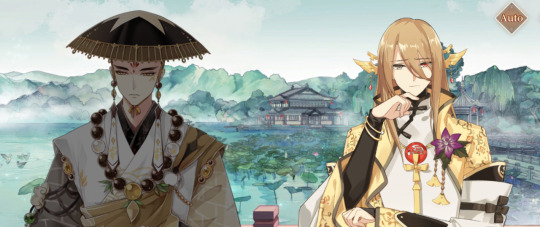
BUDDHA'S TEMPTATION : The battles in Zhaoqing? Could it be... In other words, you were born during the reign of Emperor Yongli? Please forgive me for my ignorance... I should not have mentioned the Qing banquets...
DINGHU'S VEGGIE : The dynasties change, and it is nothing but trivialities and fantasy. After all, one's true calling should only be peace and comfort for all beings on earth.
BUDDHA'S TEMPTATION : I dare not compare myself to you, master, but the period I lived in was known for its chaos. I used to suffer countless sleepless nights. The only thing I wished for was the safety and peace of the folks of Fuzhou...
BUDDHA'S TEMPTATION : It's a pity that history cannot be undone. In the end, all the things were ruined and turned to tatters, just like this garden.
Dinghu's Veggie stops fixing the floor tiles and raises his head.
DINGHU'S VEGGIE : If you wish to fix a garden, fix it. If you wish to bring peace to all, do it. Inner peace can be obtained through meditation and action. With this endless wisdom, you shall find freedom in your heart.
BUDDHA'S TEMPTATION : Through meditation and action... That's true. However, I thought that following the Buddha was the equivalent of alienating oneself from the mundane matters of this world, including the changing of dynasties.
DINGHU'S VEGGIE : That... Was what I once thought, too. However, the teachings of the Buddha are endless, and so is my journey of cultivation.
BUDDHA'S TEMPTATION : I'm all ears, Master.
#The Tale Of Food#ttof#ttof story#ttof script#Otome#食物语#食物語#食物语新马版#ttof character story#character story#dinghu’s veggie#dinghu’s-veggie#ttof dinghu’s veggie#dinghuveg
6 notes
·
View notes